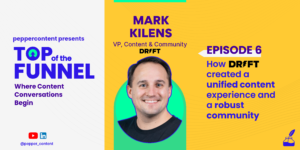Alex Siow is the author of Leading with IT: Lessons from Singapore’s First CIO. The book covers a wide range of topics: IT infrastructure and applications, information processing, knowledge management, data governance, cybersecurity, and organisational culture (see my book review here).
Alex was previously the CIO (Chief Information Officer) at Singapore’s Housing Development Board (1990) and later at Starhub. He is currently a professor in the School of Computing at NUS, and has been in leadership roles at industry IT associations.
See also YS’s Book Review section featuring over 300 titles on creativity, entrepreneurship, innovation, social enterprise, and digital transformation.
Alex joins us in this interview on the CIO’s role in digital transformation, cybersecurity, innovation, and economic survival of organisations.
Edited excerpts of the interview below:
YS [YS]: Many of our audience consists of startups. At what stage in their growth curve should founders think of bringing on board a CIO?
Alex Siow [AS]: In smaller organisations, the role of the CIO is handled by the CEO or the founder of the startup. Here I am talking about the role of developing IT strategies, governance, and value management.
The secondary role of the CIO – in managing IT, systems development, and maintenance, can be handled by an IT manager. It will be difficult for small companies to hire a CIO, so the concept of CIO-as-a-service will be attractive to a lot of startups and SMEs.
[YS]: How was your book received? What were some of the unusual responses and reactions you got?
[AS]: The book was generally well-received by the IT and business community in Singapore. There were no adverse reactions or responses. Most of the comments were positive. Several of my acquaintances were surprised that I found time to write a book despite my very busy schedule!
[YS]: Since your book was published, what are some notable new tech innovations or implementations you have come across?
[AS]: The significant technologies that will impact businesses and people are Immersive Experience, Enhancements in Cybersecurity and Defence, Robotic Process Automation, the pervasive use of Blockchain, Internet of Things, Edge Computing, and 5G networks.
[YS]: In the post-pandemic era, what kinds of tech and business skills will be the most valued by organisations?
[AS]: The pandemic has accelerated the pace of digital transformation in many companies that had already started their digital journey. For the late starters, there is a stark realisation that without IT, some of them could not survive.
The most critical post-pandemic skills would be cybersecurity and cyber-defence skills. Helping companies to get on to the cloud platform is also an important skill. Virtual reality and Augmented reality are useful to connect companies to customers for marketing and sales.
A lot of new apps based on artificial intelligence, machine learning and robotics process automation would be rolled out, which require more data scientists, analysts, and AI specialists.
[YS]: What are the elements of a good relationship between the CIO and the CTO? How should they divide tasks and align roles?
[AS]: It depends on how the CIO and CTO are positioned in the organisation. For example, in a telco, the CIO is in charge of the enterprise systems and systems that enable the business, whereas the CTO is in charge of the engineering infrastructure.
In a business organisation, where technology deployment is the key to success, the CTO will be in charge of deploying emerging technologies to transform the organisation digitally and the CIO will be implementing the enterprise systems to support the new business models brought about by the deployment of new technologies.
In some organisations, the Chief Digital Officer is in charge of digital transformation.
[YS]: How should CIOs create a culture of experimentation which also enables people to bounce back from failure?
[AS]: In my early days as CIO of HDB, we have already understood the concept of sandboxing. We had a production server for running the enterprise systems and a development server for application development, tests, and proof-of-concept trials.
It is therefore important that a sandbox environment is created in organisations to allow staff to carry out experimentation and innovation.
[YS]: How should CIOs evaluate weak signals and anecdotal evidence which seem to contradict quantitative market trends?
[AS]: The problem with emerging technologies is that nobody takes them seriously when they first emerge because, at the early stages, these innovations do not have the quality and reliability of the incumbent products in the market.
However, because of their lower price/performance index, they are attractive to lower-income groups. These customers become a testbed for these innovations and when the quality has reached an acceptable level to the masses, they explode into the marketplace and the incumbents are taken by surprise.
CIOs have to always be cognisant of the hype put out by vendors when dealing with innovation. They have to make their own judgments and carry out trials in sandboxes to assure themselves and their organisations of the feasibility of introducing such emerging technologies.
Alex Siow
[YS]: What are the top three success factors for government and industry to work together and grow digital capabilities in their countries?
[AS]: In my opinion, the most important factor to grow digital capabilities in a country is the availability of competent skilled resources. To encourage more people to take up training in emerging technologies, the Singapore government, for example, has made subsidies available through the agency called SkillsFuture Singapore.
With the availability of funding, the industry responded by curating many appropriate skills upgrading training courses, which provided a competent workforce for the industry.
Secondly, it is important to help SMEs to transform digitally. SMEs form the bulk of the economy in every country and it is important for them to do well. The government can help provide funding support for them to undergo digital transformation.
Thirdly, to bridge the digital divide between the digital haves and haves-not, the government can partner with the industry to bring suitable technologies to the heartlands of the country and run free education for the heart-landers to immerse them in the new digital era.
[YS]: How can industry and academia collaborate to make IT/management education more in line with industry needs?
[AS]: The universities have started a practice track for leading IT professionals to join academia as professors. These practice professors bring with them many years of best practices from the industry to impart to undergraduate and postgraduate students.
On top of these practice professors, there are also adjunct professors and lecturers who do not want to be a full-time academic but would like to impart industry knowledge to the students. These schemes have helped to close the gap between theory and practice for the students.
[YS]: What are some ways for a CIO to effectively integrate multiple and even conflicting kinds of advice from other leaders, vendors, and consultants? What is your advice on how to take advice?
[AS]: CIOs cannot be wholly dependent on consultants, vendors, and advisors to put up their IT plans and strategy.
I would advocate that CIOs do their own IT plans based on the business they are supporting and use outside help as sanity checks to make sure their plans have incorporated changes in the technology landscape.
[YS]: What kind of a succession plan should a CIO design? How should the next CIO be groomed internally – or chosen from outside?
[AS]: A responsible CIO should start grooming his successor from Day One of his job. A CIO’s job will include business continuity management (BCM) and grooming a successor should be part of this BCM process.
Whether a successor will be chosen from within or outside the organisation will be management’s prerogative. But if a capable leader-in-waiting has been prepared to assume the post of CIO, it would be natural for the organisation to pick him or her, because of his/her familiarity with the business.
[YS]: From your journeys across Asia and the West, what do you see as Asia’s tech and innovation strengths?
[AS]: I have been to various parts of Asia, Europe, and North America and have witnessed the impact of technology on the lives of people.
The developing countries in Asia are very hungry for knowledge and innovation. They see technology as a tool to lift them out of poverty into prosperity, as the experience of China has shown.
Developing countries have the ability to leapfrog the developed nations in deploying emerging technology because they do not have legacy infrastructure and systems to bog them down. Moreover, the cost of technology has been reduced significantly, mainly because of technology reaching a tipping point, so deploying emerging technology has become relatively easier.
[YS]: What are some daily habits aspiring CIOs should cultivate to keep on learning and upgrading themselves?
[AS]: It is important to read widely, not just internet news and stories, but also books on self-improvement, leadership, innovation, and strategic thinking. There are many online short courses for busy executives, what I call bite-size learning, that are useful to keep the mind active.
[YS]: What is your next book going to be about?
[AS]: I am looking at emerging technologies and their impact on business, with case studies of success stories, especially local and regional ones.
[YS]: What is your parting message to the aspiring entrepreneurs and tech leaders in our audience?
[AS]: There is never a bad time to be involved with digital transformation. Disruptive technologies can only be disruptive when we try to avoid or resist their advent.
We need to always keep abreast of emerging technologies and deploy them to the advantage of the organisation.
[YS]: Any other concluding comments or remarks you would like to add.
[AS]: It is unimaginable for any organisation to think they can get away with ignoring technological changes in the world. The global pandemic has really been a harsh teacher, punishing the laggards of technology adoption and rewarding the leaders of innovation.
The pandemic will not be the only harsh teacher in the years to come. The economic survival of organisations, and even nations, will depend on who can best harness the power of the technologies to come. It’s a brave new world.








![Read more about the article [Funding Galore]$448 Mn Raised By Indian Startups This Week](https://blog.digitalsevaa.com/wp-content/uploads/2022/07/Social-3-2-300x157.png)

